The Swedish cold war light tank
With the Infanterikanonvagn 91 abbreviated as Ikv-91 (for "Infantry gun carrying vehicle") Hägglunds of Sweden signed one remarkable light tank of the 1970s. And it was even not intended for reconnaissance, but for infantry support, and designated as a tank destroyer. One of its possible influence was the Soviet PT-76. Specifications indeed included the Ikv-91 to be amphibious, a necessity in some regions with Taiga and winter snow. Its manufacturer was Hägglunds and Söner (now Hägglunds Vehicle AB) also responsible for the Pbv 302 APC. Indeed for cost issues, the light tank also reused many parts, including the roadwheels of this model. The first prototype was ready and tested in 1969, but others followed until production was approved in 1975 so it arrived at the time when light tanks started to be replaced by more versatile Infantry Fighting Vehicles.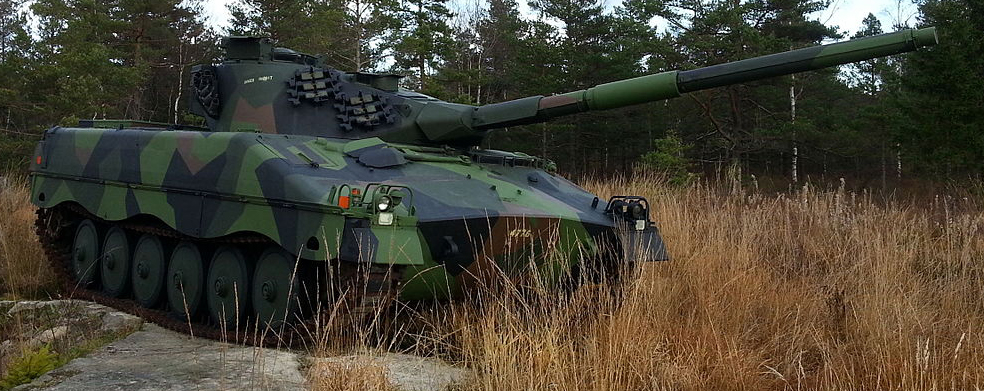 Ikv91 Nb4776 at the military training field Uddevalla, Sweden.
Ikv91 Nb4776 at the military training field Uddevalla, Sweden.
Design
Protection and general configuration The Ikv-91 was made of welded steel, with a sloped nose and turret front but flat sides and flat turret walls and rear. Specs of the armor remain unknown but were stated proof against 20-25 mm AP rounds on the frontal arc, both for the turret and hull. The running gear top was protected by rubber side skirts. Provisions were made also for extra add-on armor. Compartmentation was standard, with the driver in the hull's left-hand side, with its own hatch opening left, and three vision blocks (central IR optional one), while the rest of the crew was located inside the turret in the center. The gunner was located to the right-hand side, with the commander behind and the loader on the left-hand side. Both the loader and commander had their own hatch opening backward and sights, but the commander had no proper cupola with peripheral vision. The loader had a cartridge ejection port at the rear of the turret. Additional storage was provided by an optional turret basket.Armament: The Infanterikanonvagn-91 core was its Bofors high-pressure chamber rifled 90 mm KV90S73 L/54 (model 1973) which had a +15° elevation and −10° depression. It was capable of firing either HEAT and HE rounds with an accuracy and velocity approaching the NATO L7 105 mm gun. The rounds were substantially lighter, but 59 could be stored. With a well-trained crew, the average rate of fire was 8 rounds per minute. The barrel had a thermal sleeve and a fume extractor. Although apparently it was not fully stabilized (compared to the later Ikv-105) it was assisted by a laser rangefinder, night vision and a computerized fire-control system for improved first hit capability. Secondary armament comprised two 7.62 mm Browning machine guns or m/39 machine guns (one coaxial, one roof-mounted), a bi-tube Lyran 71 mm light grenade launcher (optionally mounted on the turret) and two banks of six smoke grenade dischargers for concealment on the turret rear sides.
Mobility: Mobility of the Infanterikanonvagn-91 was assumed by a powerful Volvo Penta model TD 120 A, a 4-step turbocharged straight six-cylinder diesel engine with a cylinder volume of 11.97 litres, which developed 330 hp at 2200 rpm for a favorable power to weight of 20.2 hp/tonne and a top speed in excess of 65 kph on flat. Off-road capabilities were excellent thanks to a relatively low ground pressure, large tracks, and large roadwheels (no return rollers) resting on independent torsion bar units. The drive sprockets were at the rear and idlers at the front. Field trials showed it could climb a 60% slope, 30% side slope, 0.8 m vertical step, 2.8 m trench and swim at 7 kph. The Ikv-90 was indeed made fully amphibious, buoyant enough thanks to the hull sides cofferdams, to swim with a short preparation, including raising a trim vane folded on the glacis and setting up screens to protect water from entering the engine.
The Infanterikanonvagn 105
Plans were made to replace the Bofors 90 mm gun by a standard NATO equivalent 105 mm gun or even a TOW missile launcher. The former was made as a prototype in 1983 (Ikv 105) and tested but was seen less attractive as new vehicles were about to enter service like the Leopard 2 or CV-90. The Ikv 105 was marketed for export and evaluated by India and US Army. Compared to the IKv-91 it weighed 18 tons, was able to swim at 12 kph, and its Bofors 105 mm had a low recoil and was fully stabilized, coupled with a new FCS and SAAB IR sight. Both the gunner and commander had displays and gun control.Service
The production span was quite short for an armored vehicle, just three years (until 1978). The 212 manufactured were given organically to infantry brigades, which had one company of 12 vehicles each acting as tank destroyers although they could naturally have been employed as reconnaissance vehicles. The 10th Mechanized Brigade also had two companies in the 1980s. They traded armor for armament range and mobility and therefore needed to "nail down" their opponents faster and at a longer range. After long years of service, the Ikv 91 was retired gradually in the late 1990s to the early 2000s. Its partial replacement was the CV90 (IFV) and Leopard 2.Links
The Infanteriekanonvagn 91 on wikipedia Walkaround on prime portal
specifications |
|
| Dimensions | 6.41 (8.85oa) x3 x2.32 m (21 x9.8 x 7.5 ft) |
| Total weight, battle ready | 16.3 tons (32.600 Ibs) |
| Crew | 4 (driver, cdr, gunner, loader) |
| Propulsion | Volvo Penta TD 120A, turbo six-cyl diesel 330 hp at 2200 rpm P/w 20.2 hp/t |
| Suspension | Torsion bar beam suspensions |
| Speed (road) | 65 km/h (40 mph) |
| Range | 500 km (311 mi) |
| Armament | Main: 90 mm KV90S73 Sec: 2x 7.62 mm m/39 LMG 2 Lyran 71 mm light grenade launchers |
| Armor | 20 mm frontal arc estimated (0.8 in) |
| Total production | 212 |

Infantriekanonvagn-91 in standard camouflage.

Ikv-91 with winter camouflage
Video
Gallery
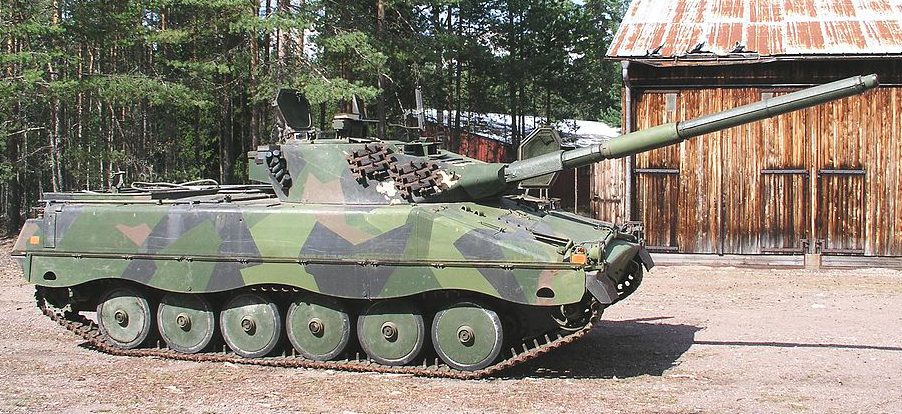
Preserved Ikv-91
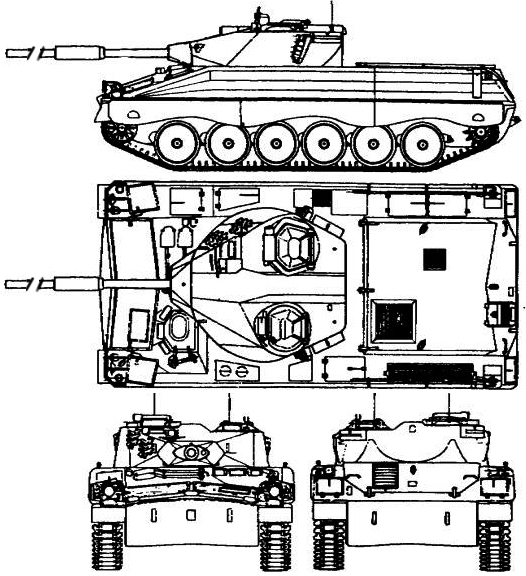
Blueprint of the Ikv-91
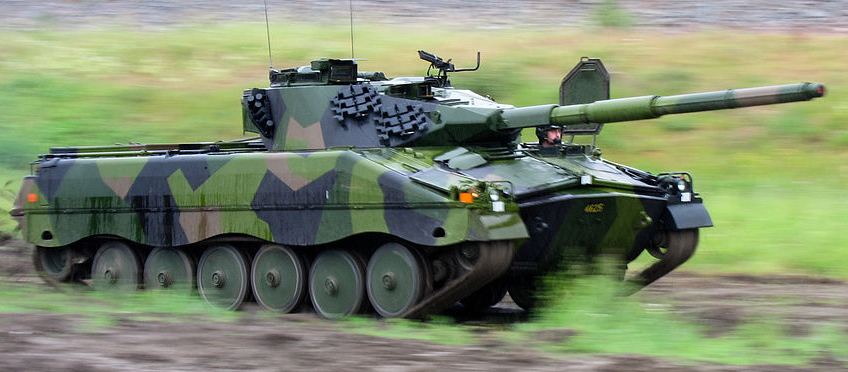
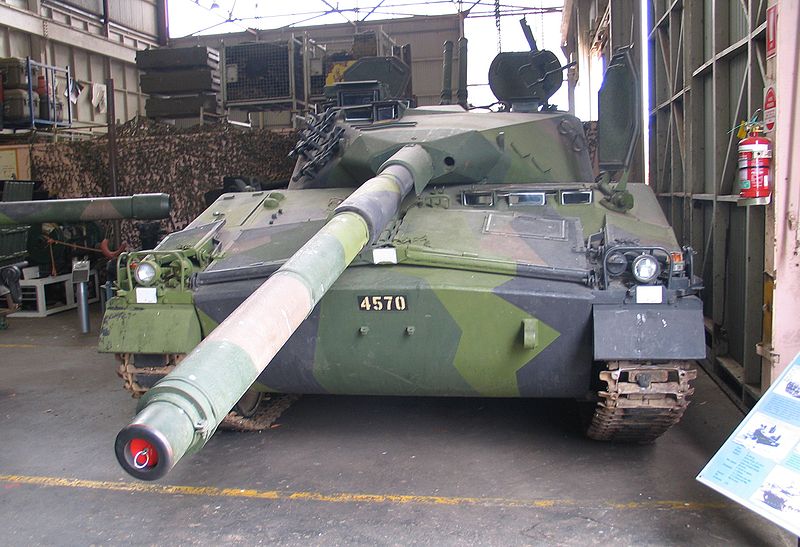


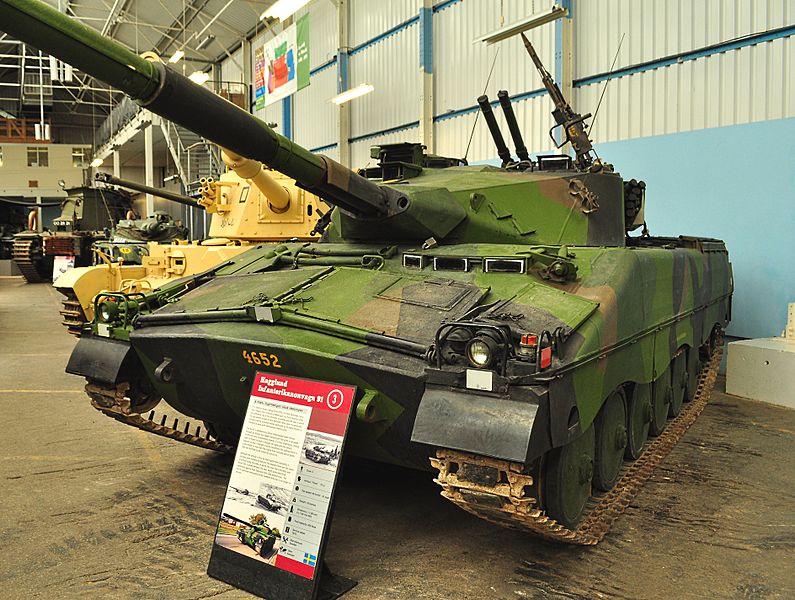

Cold War Tanks


































Cold war tanks posters

Cold War Main Battle Tanks

Cold War Soviet Army
Museums, Movies, Books & Games
The Tanks and Armor in pop culture
Tanks and armored vehicles in general are only really grasped when seen first person: The mass, the scale, it's all there. Explore also the way tanks were covered in the movie industry, in books and in video games.Movies:
Best tanks movie on warhistoryonline.com
On imdb.com
On bestsimilar.com/
miltours.com
liveabout.com/
watchmojo.com
Video Games:
pcgamesn.com
historyhit.com
levvvel.com
vg247.com/best-tank-games
mmobomb.com/
alienwarearena.com

